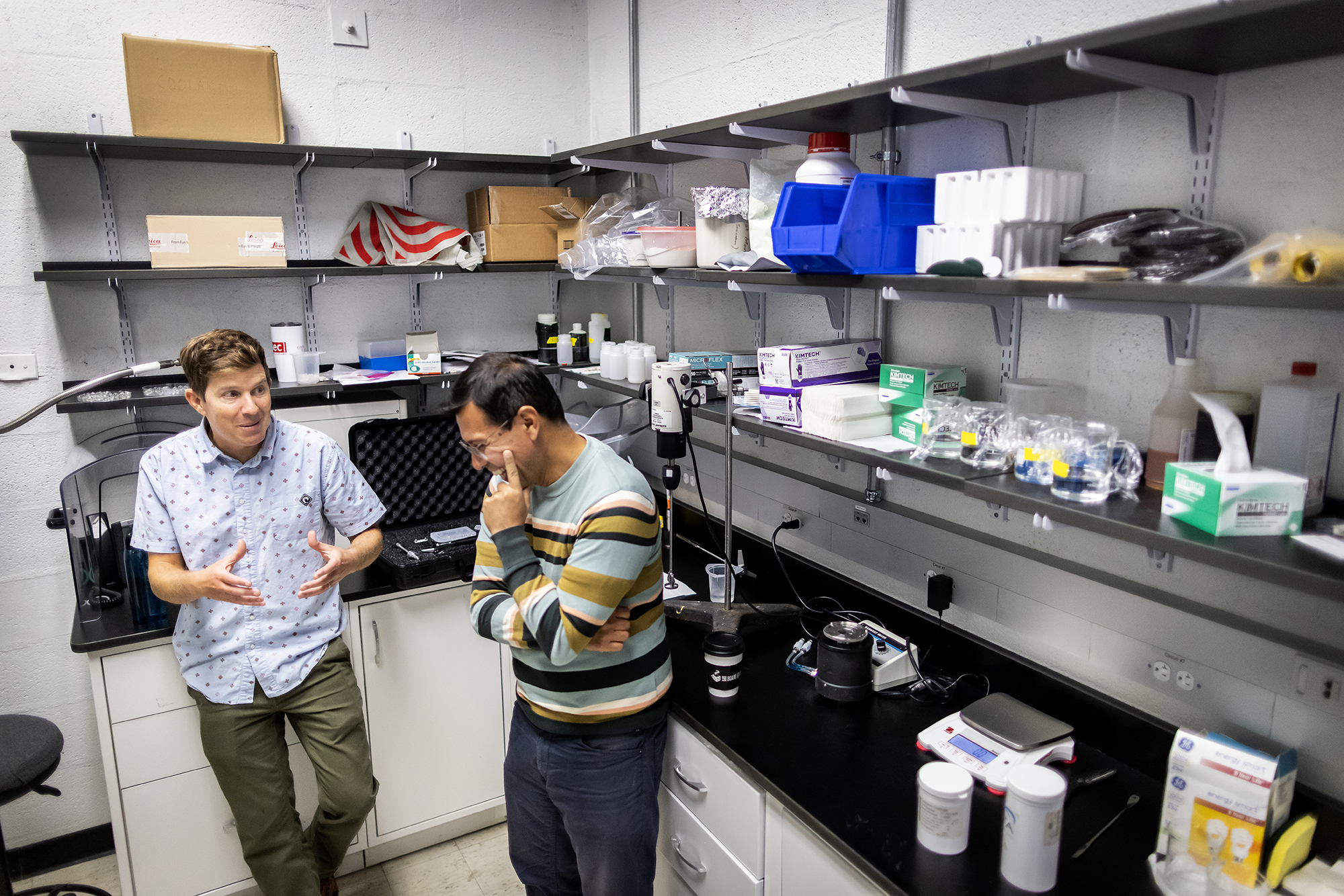
Researchers at Penn are working on cracking the code behind Major League Baseball’s ‘Magic Mud.’
With the Phillies’ World Series hopes dashed by the Arizona Diamondbacks, researchers at the University of Pennsylvania are diverting their gaze to a lesser-known player in the baseball saga: the “magic mud.”
This mysterious mire, harvested from a secret locale along the Delaware River, has long been an unsung companion of Major League Baseball (MLB) players. The mud has been sourced by one family safeguarding its location for nearly 90 years and is a goopy, grayish-brown substance that has the curious property of “spreading like cream, and gripping like sandpaper,” according to Douglas Jerolmack, a professor of earth and environmental science at Penn’s School of Arts & Sciences and mechanical engineering and applied mechanics (MEAM) at Penn Engineering who is leading the investigative charge.
“Before every game, baseballs are massaged with this mud which gives it a grip-friendly veneer to the otherwise slippery sphere,” Jerolmack says.
Alongside Jerolmack is colleague Paulo Arratia, professor of mechanical engineering and applied mechanics and chemical and biomolecular engineering in Penn’s School of Engineering and Applied Science; postdoctoral researcher Shravan Pradeep; and undergraduate researcher Xiangyu Chen. The team is delving into the physics and chemistry of the magic mud to crack its code and unravel what makes it so special and to see if the principles underlying its properties could herald a new wave of materials science innovations.
“In 2019, when a sports reporter approached me about the mud, I didn’t know anything about the mud, nor baseball,” Jerolmack says. “And in researching this, we’ve since found a world of information and literature about it and so much intrigue, but no mechanistic understanding as to how it works or if it works.”
Arratia explains that under a microscope the mud resembles an ordinary blend of sand, silt, clay, and water; however, when subjected to a rheometer, a device measuring viscosity, the mud behaves like a luxurious face cream, and the more force applied the thinner it spreads.
“This unexpected behavior of the mud, especially given its sandy constitution, intrigued us further,” Arratia says. What’s more, he notes, the consistency and composition of this natural mud may vary from batch to batch and from year to year, which has raised concerns within MLB.
“They want the game to be as predictable and consistent as possible, so understanding this mud at a microscopic level can help achieve that.”
“But let me stress that we’re not trying to put the family out of business by helping the MLB produce a synthetic version of the mud,” Jerolmack says. “We hope to find some relationship between what it’s made of and how it flows, how it grips, and how it interacts with surfaces.”
The researchers are leaving no stone unturned. Techniques like scanning electron microscopy (SEM) allow them to image even the tiniest clay particles and to pinpoint the constituent components.
“You could use a standard optical microscope to see these tiny grains and get a pretty good picture of what’s going on,” Jeromlack says. “But the beauty of SEM is that it allows us to take things a step further; past the limits of the light and into the nanoscale; we get to see which elements are where.”
Arratia adds that it’s also important to know how the materials are composed, saying, “Whether the grains of sand are clustered or well-dispersed could help explain why it flows the way it does the more it’s smeared or pushed on.”
Pradeep, who came to Penn with an extensive background in cataloging flows, adds that, when Jerolmack pitched this project to him, he soon realized that it wasn’t just a flow problem, “It’s a flow and a grip problem,” he says. “We need to figure out how the fluid properties contribute to the ball’s tactility and how they’re related, so we’re designing and doing a lot of tests that simulate the interaction between the pitcher’s hand and the ball.”
Chen, a third-year in MEAM from Grand Rapids, Michigan, is creating the synthetic finger used to study ball-to-hand interactions. He notes that beyond being a great way to apply some of his skills in machining, the opportunity to work on a project that reverse engineers a product found in nature seems exciting and he looks forward to seeing it take shape.
The team is gradually prodding away and picking apart what’s at the heart of the mud. Soon, they will publish some of their findings, and they expect other teams will begin looking into the mud, expanding on the work.
“We’re not expecting to have all the answers and a complete understanding of what makes this mud just yet,” Jerolmack says. He likens the project to figuring out a specific cake recipe, saying, “We know the ingredients and suspect there could be a few others, like microbes and whatnot, but we’re just trying to get a very basic understanding of what’s going on, and we anticipate that we and others will add on to this understanding over time.”
Douglas Jerolmack is a professor in the University of Pennsylvania School of Arts & Sciences’ Department of Earth and Environmental Science and the School of Engineering and Applied Science’s Department of Mechanical Engineering and Applied Mechanics.
Paulo Arratia is a professor in Penn’s School of Engineering and Applied Science’s departments of Mechanical Engineering and Applied Mechanics and Chemical and Biomolecular Engineering.
Shravan Pradeep is a postdoctoral researcher in the School of Arts & Sciences at Penn.
Xiangyu Chen is a third-year mechanical engineering and applied mechanics student in the School of Engineering and Applied Science.
